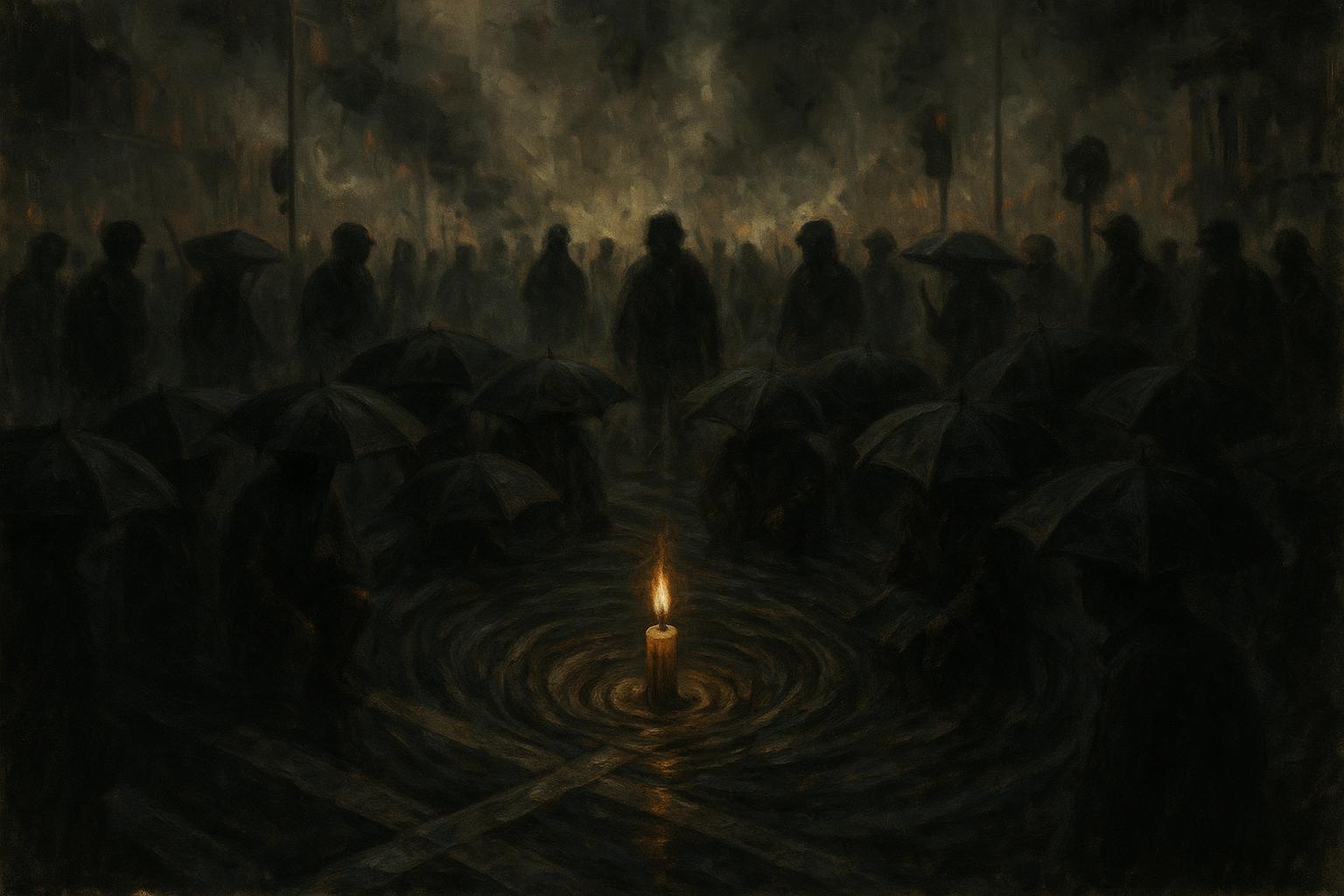Deputy Prime Minister David Lammy faced a hostile response at a vigil held near Manchester’s Heaton Park Hebrew Congregation Synagogue to honour victims of the recent terror attack. Mourners booed and heckled Mr Lammy, accusing him and the government of having ‘blood on their hands’ and allowing antisemitism to fester on the streets. His calls for unity and respect for the Jewish community’s grief were repeatedly interrupted by chants demanding an end to pro-Palestinian marches, with some telling him to ‘go to Palestine’ and ‘leave us alone’. The event, attended by hundreds despite heavy rain, starkly highlighted the deep frustrations within the local Jewish community in the wake of the attack.
The vigil came amid heightened tension following the attack by Jihad Al-Shamie, an Islamic terrorist who targeted worshippers during the Yom Kippur service. The attack resulted in the deaths of two worshippers — Adrian Daulby, 53, who was accidentally shot by police while attempting to prevent the attacker’s entry, and Melvin Cravitz, 66, who was stabbed. Both victims have been remembered by their communities as heroes and exemplars of goodwill; Mr Cravitz was described by his Muslim neighbours as ‘always smiling’ and a true friend. Authorities have arrested six individuals linked to the incident, while the terrorist himself was shot dead by police. Jihad Al-Shamie's criminal record and previous bail for an alleged rape added to the shock, as did the revelation that his father condemned the attack yet praised the October 7 attacks overseas.
The government has urgently moved to provide support to victims and families. The UK has activated the Independent Public Advocate service to assist those affected emotionally and practically, ensuring they understand their rights throughout ongoing investigations. Deputy Prime Minister Lammy pledged the government’s commitment to combating antisemitism and standing firmly with the Jewish community during this fraught period.
However, the tensions have extended beyond the immediate tragedy. Just hours after the attack, pro-Palestinian groups staged demonstrations that led to multiple arrests, including some for assault on police officers. The confrontational nature of these protests, notably those organised by groups like Defend Our Juries, sparked further outrage and accusations that they were insensitive to the mourning Jewish community. Reform UK leader Nigel Farage condemned the protests as ‘vile’ and emblematic of ‘Broken Britain’, attributing some blame to recent governmental recognitions of Palestinian statehood, which he claimed had ‘emboldened’ the protesters.
Authorities, including Met Commissioner Sir Mark Rowley, voiced concerns about the protests intensifying tensions and lacking sensitivity given the recent violence. Despite calls from police and government officials, including the Home Secretary Shabana Mahmood who labelled the demonstrations ‘dishonourable’ and ‘fundamentally un-British,’ the protests have continued as planned. Legal options to ban such protests remain limited, and there is ongoing debate about whether new legislation might be needed to prevent demonstrations that could overwhelm police resources or inflame community divisions further.
The Manchester synagogue attack has also stirred broader fears about escalating violence and religious divisions across the UK. Security measures have been increased, and officials have urged communities nationwide to unite against hate and not succumb to division. The tragedy and its aftermath underscore the delicate balance between protecting freedom of expression and ensuring public safety and cohesion in times of heightened communal strain.
The scenes at the vigil encapsulate this fraught moment: a community deeply hurt and angry, grappling with grief and fear, and a government trying to demonstrate solidarity amid stark criticism. As Britain mourns the loss of two cherished members of its Jewish community, the challenge now lies in bridging these divides and preventing further escalation of hatred and violence.
📌 Reference Map:
- Paragraph 1 – [1], [2]
- Paragraph 2 – [1], [5], [7]
- Paragraph 3 – [3]
- Paragraph 4 – [1], [4]
- Paragraph 5 – [1], [4]
- Paragraph 6 – [6]
- Paragraph 7 – [1], [2], [3], [4], [6]
Source: Noah Wire Services
